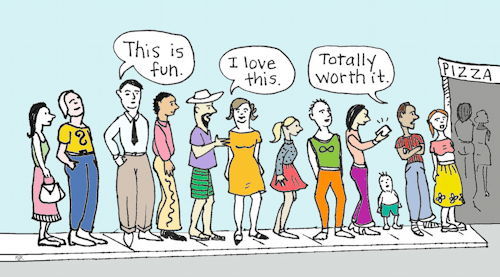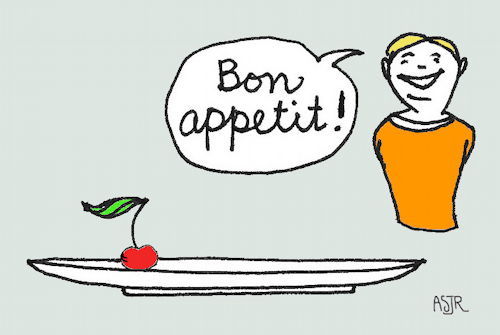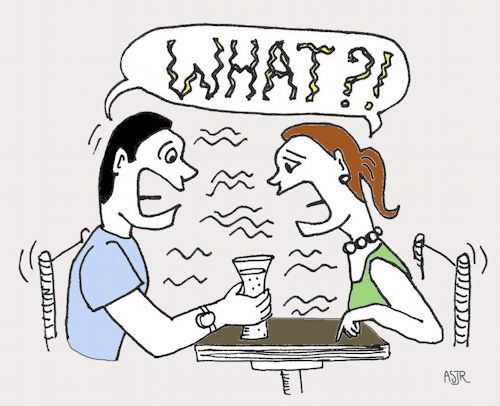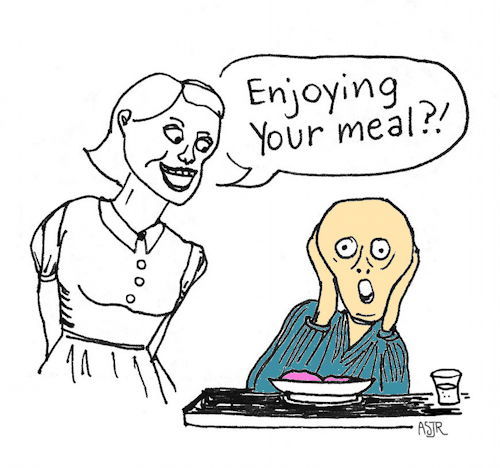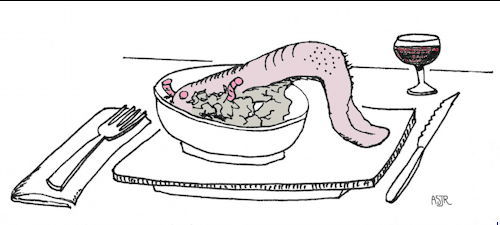
The dining-out experience has transformed almost beyond recognition since our parents and grandparents ordered banana splits and lobster thermidor at cozy counters and plush booths. If our Mad Men-era ancestors saw the typical 2014 hipster-magnet hotspot, they'd be appalled, thinking: This is not a restaurant but rather a scary laboratory testing the limits of human endurance.
Many aspects of modern dining are actually painful. In any other context, we wouldn't tolerate such torment. How did this happen? Is it permanent? Will restaurants forever be synonymous with suppressed suffering? Can we free ourselves and future generations from such Cynar-scented hell? We can begin by bravely naming those things about trendy restaurants that until now we've been afraid to admit that we hate.
1. Waiting in line. Why do so many people willingly wait so long to pay so much money for food that's ... um, food? Reason A: The kind of people who can afford to do this are ashamed that they can afford to do this. For them, queuing is a form of self-flagellation plus a cool way of pretending to be on Bolshevik bread lines. Reason B: They think standing on such lines makes them look smarter and more discerning than dumb yahoos like you who'd rather eat than wait.
2. Tiny portions in humongous plates. We don't want to eat our way into obesity. But really. What is this, Alice in Wonderland? Four ravioli huddling alone in a steering-wheel-sized behemoth of a dish: Why? Such plating makes portions look even smaller than they really are. Which is really small. But hey. Everyone knows you won't complain, act shocked or ask for more.
3. Extreme loudness. Music. Shouting. Chairs, dishes and cutlery clanging and scraping across hard surfaces with no sound-absorbing softness anywhere. Unable to hear yourself think, much less talk, you eat quickly and leave, earning the restaurateur twice as much as if you stayed. Why eat here at all? Because hellish dins make restaurants seem "crowded," thus "popular," thus whoever eats there feels superior to those pathetic losers dining at that silent, half-empty place next-door.
4. Servers who keep reappearing at your table demanding to know whether you're enjoying your meal. It's not as if you could ever say no.
5. Offal. Our ancestors ate organs because our ancestors were poor and/or rural and/or belonged to cultures in which swallowing sliced-up kidneys and coagulated blood was not considered gross. Take it from someone who as a child was traumatized by the frequent appearance, on family dinner tables, of braised chicken gizzards and brick-sized boiled beef tongues, whose stippled tips and jiggly tubules cannot now be un-remembered. For Whopper-bred hipsters, offal represents borrowed nostalgia, momentary authenticity and an edible form of Truth or Dare.
All illustrations drawn by Anneli Rufus.
